inter-stellxr-blog
"I don't know who will read this. I guess someone will find it eventually. Maybe in a hundred years or so." -Mark Watney
174 posts
Latest Posts by inter-stellxr-blog
This is me
i dab every morning when i wake up





Here’s to all my boys with love handles, stretch marks, ribs that show, who feel they are too big or too small, who feel “unmanly,” who have cellulite, who can’t grow facial hair, who can’t seem to gain weight or lose it, who feel “too short” or wish they looked like a male model. Y'all matter. Love you. 💕
Were Troy’s walls not built by Gods? Was Rome not made by two twin half-blood gods? QUESTION: What do they both have in common? ANSWER: They both fell.
the gods like to make things that collapse // L.H.Z (via lhzthepoet)
abusive parents can buy their children nice things
abusive parents can provide food, shelter and other necessaries
abusive parents can be nice to their children at times
abusive parents can seem like the most loving parents in the world
You don’t know what goes on behind closed doors.






support black people

Jupiter and Earth imaged together by NASA’s STEREO/HI-1A / via

A researcher in Russia has made more than 48 million journal articles - almost every single peer-reviewed paper every published - freely available online. And she’s now refusing to shut the site down, despite a court injunction and a lawsuit from Elsevier, one of the world’s biggest publishers.
For those of you who aren’t already using it, the site in question is Sci-Hub, and it’s sort of like a Pirate Bay of the science world. It was established in 2011 by neuroscientist Alexandra Elbakyan, who was frustrated that she couldn’t afford to access the articles needed for her research, and it’s since gone viral, with hundreds of thousands of papers being downloaded daily. But at the end of last year, the site was ordered to be taken down by a New York district court - a ruling that Elbakyan has decided to fight, triggering a debate over who really owns science.
“Payment of $32 is just insane when you need to skim or read tens or hundreds of these papers to do research. I obtained these papers by pirating them,”Elbakyan told Torrent Freak last year. “Everyone should have access to knowledge regardless of their income or affiliation. And that’s absolutely legal.”
If it sounds like a modern day Robin Hood struggle, that’s because it kinda is. But in this story, it’s not just the poor who don’t have access to scientific papers - journal subscriptions have become so expensive that leading universities such as Harvard and Cornell have admitted they can no longer afford them. Researchers have also taken a stand - with 15,000 scientists vowing to boycott publisher Elsevier in part for its excessive paywall fees.
Continue Reading.

Astronomers have found compelling signs for a supermassive black hole in the center of almost every large galaxy they have scrutinized, and the Milky Way is no exception. The core of our galaxy harbors an object called Sagittarius A* (pronounced A-star) — a black hole with about 4 million times the Sun’s mass. It’s the 19th confirmed black hole in the Milky Way, and it sits dead in the center.
The evidence takes several forms. First, intense radio waves and X-rays flow from an accretion disk that spans a region no bigger than our solar system. But the proof comes from careful tracking of the motions of stars as they orbit the central mass. It’s the same method astronomers use to hunt for globular cluster black holes, but the huge size of the object in the Milky Way’s heart makes these motions far easier to see. Analyzing the stellar orbits leads directly to the black hole’s mass.
The count of black holes in our galaxy likely will continue to grow in the years ahead, but it never will outpace the flood of planet discoveries. The ability to find planets has reached the stage where it’s surprising when a week goes by without a new detection. Black holes hide their identities much better, either behind the cloak of an event horizon or in isolation from other objects. Perhaps the biggest surprise in the study of our galaxy’s black holes is that we’ve already found 19.
[Continue Reading→]








Check out these 10 cool facts about Mercury here: http://astronomyisawesome.com/solar-systems/cool-facts-about-mercury/






Check out these 10 cool facts about Venus here: http://astronomyisawesome.com/solar-systems/cool-facts-about-venus/

How Big is our Solar System Infographic - http://astronomyisawesome.com/infographics/how-big-is-our-solar-system/





Learn more about the Gas Giant Planets in our Solar System here: http://astronomyisawesome.com/solar-systems/what-are-the-gas-planets/

For more of the greatest collection of #Nebula in the Universe, visit http://nebulaimages.com/

Supermoon Total Lunar Eclipse and Lightning Storm
![In A Real Vector Space, Such As R, Corresponding Concept In An Caffeine Space. [2880x1800] Http://space-pics.tumblr.com/](https://64.media.tumblr.com/dcfac08d3daf4e7cf69dd289b8c6ca7a/tumblr_o1qm2a5Dve1rcl722o1_500.jpg)
In a real vector space, such as R, corresponding concept in an caffeine space. [2880x1800] http://space-pics.tumblr.com/

SpaceX “Just Read the Instructions” droneship ready for Sunday launch & landing attempt http://space-pics.tumblr.com/ source:http://imgur.com/r/space/pANdna4








launched eighteen years ago, the cassini orbiter is set to crash in to saturn next september, ending its mission to collect data, including these true colour images, on saturn and it’s moons and rings. saturn’s main rings, composed mostly of ice, are thought to have formed only a few hundred million years ago, long after the planet, and the solar system itself, were birthed some four and half billion years ago.
though a hundred and seventy million miles in diameter, the main rings are only half a mile thick, with the brighter bands showing areas of greater density, and the darker, less dense areas swept relatively clear by the gravity of saturns’ moons - clear enough, anyways, for the cassini orbiter to pass through one of the gaps basically unscathed.
there is no consensus on how the rings were created, but a medium sized moon, either shattered by a meteor or pulled apart by the planet’s gravity, would account for the entire mass of the rings. there is, however, more of a consensus that in about fifty million years, saturn’s gravity will have pulled in the rings and swallowed them up. (but at least mars should have a ring by then.)
saturn has over forty moons, including one found within a ring gap. these photos show the distant rhea and titan - the latter of which is larger than mercury and has its own atmosphere and hydrocarbon lake - and the inner most mimas and enceladus - the latter being notable for its encompassing liquid ocean of water and geothermal activity.

In first grade Jessica Meir made a drawing of herself standing on the moon. Turns out she underestimated her own ambition: Today, at 38, Meir could become the first human to touch down on an even farther destination: Mars. A next step for man? Yes, and a giant leap for womankind.
The mission itself is at least 15 years away—it will take that long to build and test every last piece of equipment. But it’s already the most hotly anticipated space-exploration effort ever. Governments around the world—in China, Europe, and Russia—have plans in the works to at least land robots on Mars, while in the U.S., private companies like SpaceX are partnering with NASA on a human mission and plotting their own commercial trips. And unlike the 1960s race to the moon, this time women are playing pivotal roles—building rockets, designing space suits, and controlling the remote rovers that are already sending momentous insights back from Mars.
A human landing will not, to put it mildly, be easy. The shortest route to our planetary neighbor is 35 million miles. Just getting there will take six to nine months; a round-trip, two to three years. “This will be the longest, farthest, and most ambitious space-exploration mission in history,” says Dava Newman, Ph.D., NASA’s deputy administrator. Once they’ve landed, the astronauts will have to navigate giant dust storms, temperatures that can plummet to minus 284 degrees Fahrenheit in winter, and an atmosphere filled with cancer-causing galactic radiation. If their equipment fails? NASA won’t hear an SOS for 10 minutes. And there’s no turning back. “It’s not like the moon; that’s a three-day trip,” says Jason Crusan, director of advanced exploration systems at the agency. “When you go to Mars, you’re going. You can’t abort.”
And yet the pull is irresistible: The rovers have revealed a land of swooping red dunes and craters. Evidence of water—not just ice, but actual flowing water—has surfaced, and water is often considered a sign of possible life. “Mars can teach us so much about the past, present, and future of our own planet,” says Meir. “That’s a phenomenal thing.”
Also phenomenal? For the first time NASA’s latest class of astronauts is 50 percent female. A fearless group, Meir and her colleagues Anne McClain, 36, Christina Hammock Koch, 37, and Nicole Aunapu Mann, 38, have already flown combat missions in Iraq, braved the South Pole, and dived under thick layers of ice in Antarctica. Last fall they gave Glamour exclusive access to watch them train at NASA’s facilities in Houston—and talked about their epic adventure.
Continue Reading.


Alternate Concept: Minimized Fairing and Stage 2 Recovery
NASA: 2016 Look Ahead

The work we do, and will continue in 2016, helps the United States maintain its world leadership in space exploration and scientific discovery. Here’s an overview of what we have planned for the coming year:
Our Journey to Mars

We’re developing the capabilities needed to send humans to an asteroid by 2025 and Mars in the 2030s. Mars is a rich destination for scientific discovery and robotic and human exploration as we expand our presence into the solar system. Its formation and evolution are comparable to Earth, helping us learn more about our own planet’s history and future.
Work and Research on the International Space Station

The International Space Station is a unique place – a convergence of science, technology and human innovation that demonstrates new technologies and makes research breakthroughs not possible on Earth. In 2016, we will continue our groundbreaking research on the orbiting laboratory.
Returning Human Spaceflight Launches to American Soil

Our Commercial Crew Program is working with the American aerospace industry as companies develop and operate a new generation of spacecraft and launch systems capable of carrying crews to low-Earth orbit and the International Space Station. Commercial transportation to and from the station will provide expanded utility, additional research time and broader opportunities of discovery on the orbiting laboratory.
Studying Our Earth Right Now

We use the vantage point of space to increase our understanding of our home planet, improve lives and safeguard our future. In 2016, we will continue to monitor Earth’s vital signs from land, air and space with a fleet of satellites and ambitious airborne and ground-based observation campaigns.
Fostering Groundbreaking Technology Development

Sustained investments in NASA technology advances our space exploration, science and aeronautics capabilities. Our technology development also supports the nation’s innovation economy by creating solutions that generate tangible benefits for life on earth. In 2016, we will continue to invest in the future of innovation.
Breakthroughs in Aeronautics

Thanks to our advancements in aeronautics, today’s aviation industry is better equipped than ever to safely and efficiently transport all those passengers to their destinations. In fact, every U.S. aircraft flying today and every U.S. air traffic control tower uses NASA-developed technology in some way. In 2016, we will continue making these breakthroughs in aeronautics.
Discoveries in Our Solar System and Beyond

This year we will continue exploring our solar system and beyond to unravel the mysteries of our universe. We are looking to answer key questions about our home planet, neighboring planets in our solar system and more!
Make sure to follow us on Tumblr for your regular dose of space: http://nasa.tumblr.com
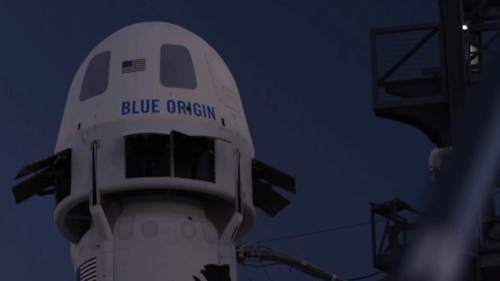
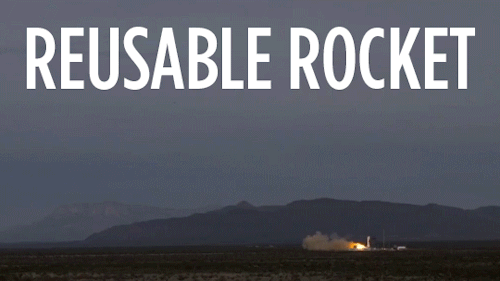

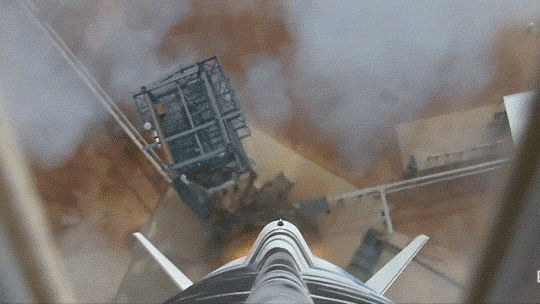
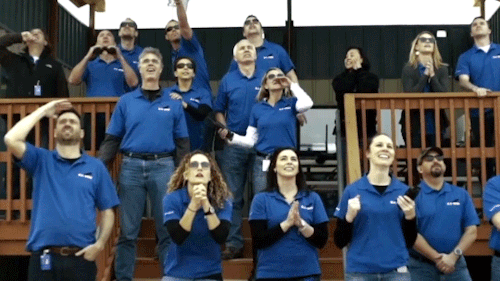
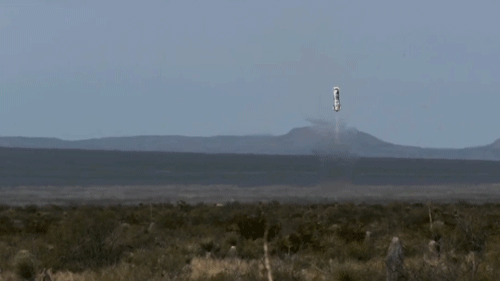
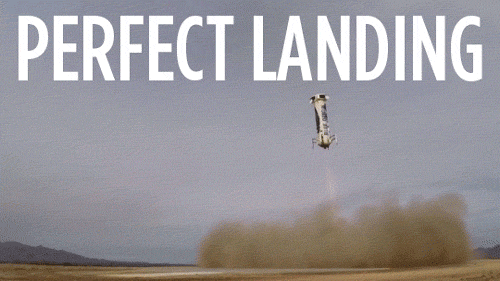
Via his very first tweet, Jeff Bezos announced that his spaceflight company has accomplished a historic first. It sent a rocket to the edge of space and then landed that rocket’s main fuselage gently on dry land.
Most things humans have sent into space are pushed up there by a disposable rocket. Once the rockets do their job, they fall back to earth, usually worse for wear. They have to be rebuilt each time (though sometimes their parts can be reused). That’s an expensive process, especially if you are a private company hoping to bring tourists to space. Virgin Atlantic, Elon Musk’s company SpaceX and Bezos’ Blue Origin all want to do just that.
And now Blue Origin has paved the way, landing its rocket on its second attempt (the propulsion module was destroyed when they first tried). Here’s the video in full:
Elon Musk responded to the news on Twitter. He pointed out that it requires much greater speed to actually reach orbit than it does to reach the edge of space. (Phil Plait has some good analysis of the exchange over on his Bad Astronomy blog.)
Still, it’s a pretty amazing accomplishment.






Sci Fi Concept Art by Huang Frank


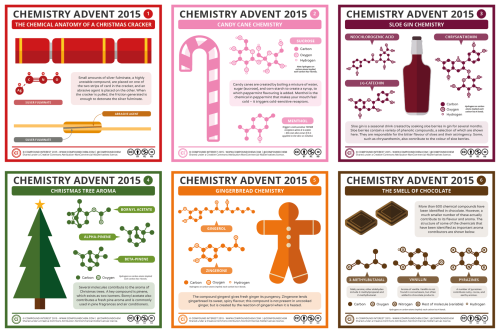
Six days into the Chemistry Advent Calendar! Missed any so far? Catch up here: http://www.compoundchem.com/2015advent/



